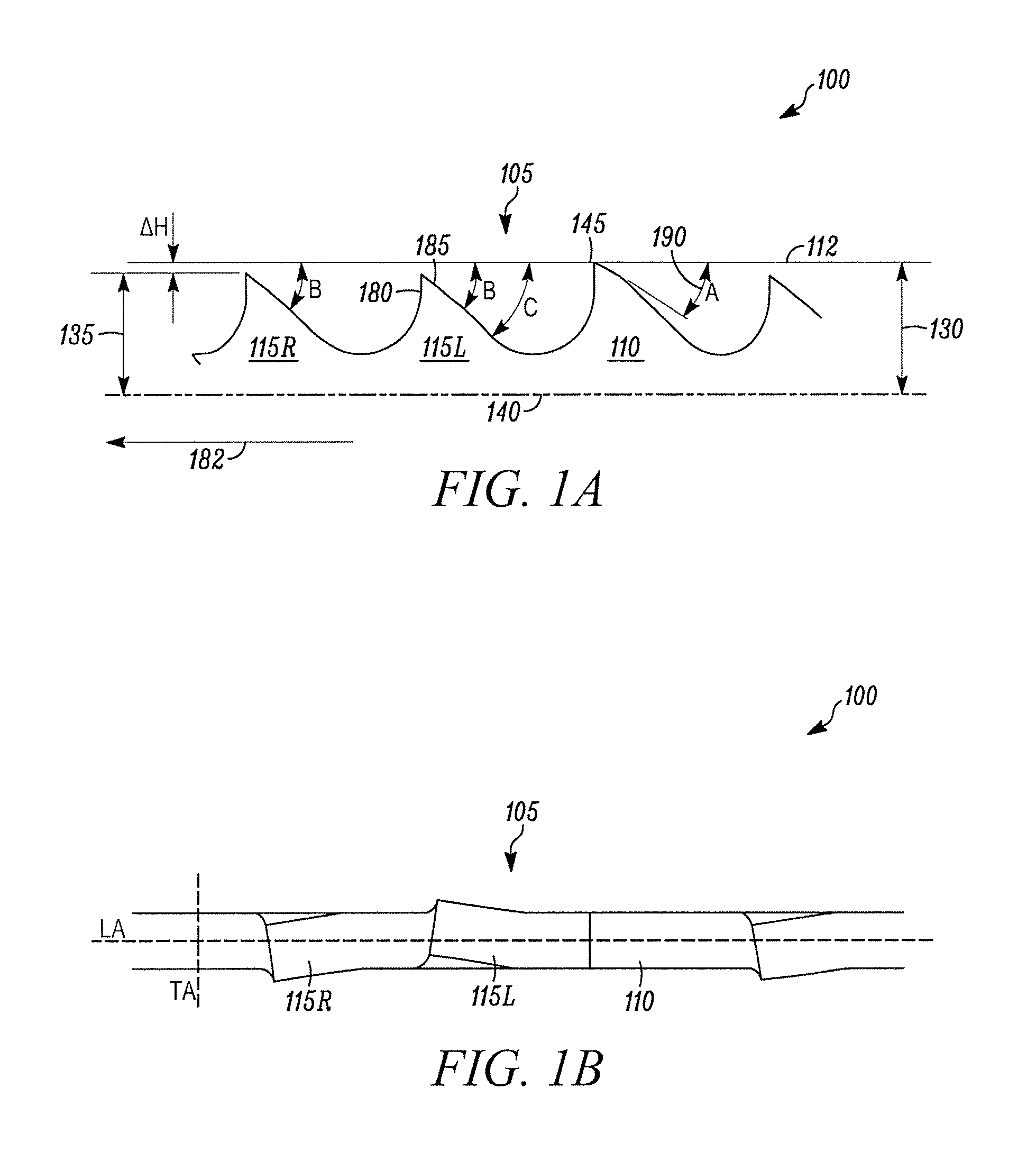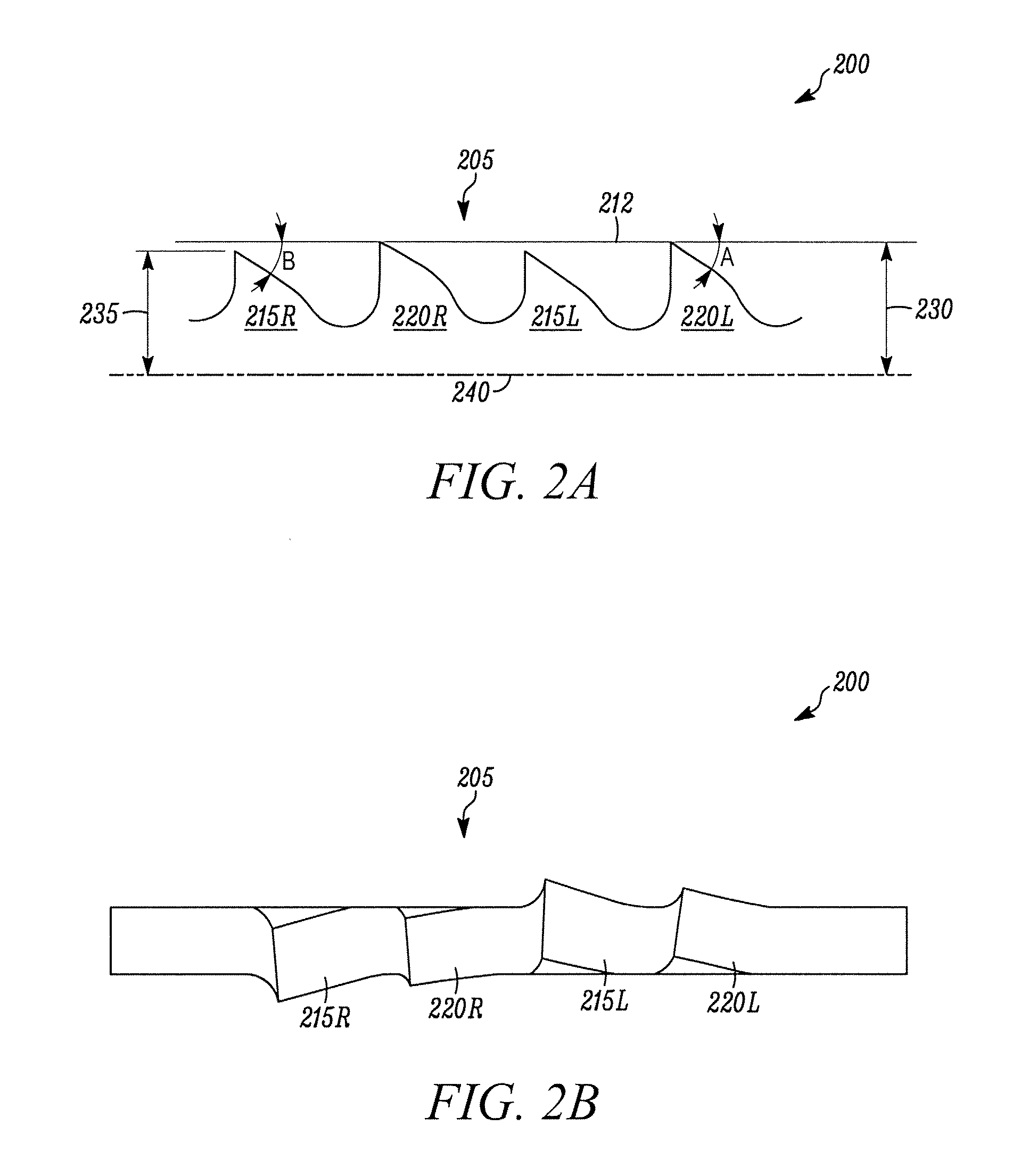Reciprocating Saw Blade Having Variable-Height Teeth and Related Method
a saw blade and variable-height technology, applied in the field of saw blades, can solve the problems of reducing the cutting force of the saw blade, reducing the cutting speed and/or durability, and requiring a trade, so as to improve the cutting speed and/or durability, and improve the cutting force. the effect of performan
- Summary
- Abstract
- Description
- Claims
- Application Information
AI Technical Summary
Benefits of technology
Problems solved by technology
Method used
Image
Examples
Embodiment Construction
[0045]In FIGS. 1A and 1B, a first embodiment of a reciprocating saw blade of the present invention is indicated generally by the reference numeral 100. The saw blade 100 is used in a reciprocating saw. A reciprocating saw is a portable power saw that is typically hand-held and includes a chuck for releasably engaging the saw blade and driving the saw blade in a reciprocating motion. Reciprocating saws are sometimes referred to as recip saws or jig saws and these terms are used synonymously herein. Reciprocating saws are typically driven by an electric motor (cord or cordless), or are pneumatically driven. Reciprocating saws are driven in any of a variety of cutting actions, including orbital, linear and / or angled. Reciprocating saw blades are blades that include at least one tang for mounting the blade within the chuck of a reciprocating saw. Reciprocating saw blades are sometimes referred to as recip blades or jig saw blades and these terms are used synonymously herein.
[0046]The re...
PUM
| Property | Measurement | Unit |
|---|---|---|
| height | aaaaa | aaaaa |
| clearance angle | aaaaa | aaaaa |
| clearance angle | aaaaa | aaaaa |
Abstract
Description
Claims
Application Information
 Login to View More
Login to View More - R&D
- Intellectual Property
- Life Sciences
- Materials
- Tech Scout
- Unparalleled Data Quality
- Higher Quality Content
- 60% Fewer Hallucinations
Browse by: Latest US Patents, China's latest patents, Technical Efficacy Thesaurus, Application Domain, Technology Topic, Popular Technical Reports.
© 2025 PatSnap. All rights reserved.Legal|Privacy policy|Modern Slavery Act Transparency Statement|Sitemap|About US| Contact US: help@patsnap.com



